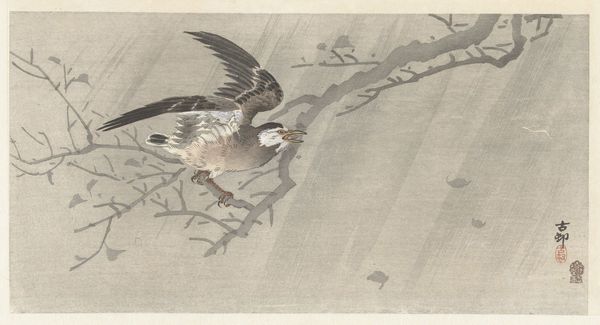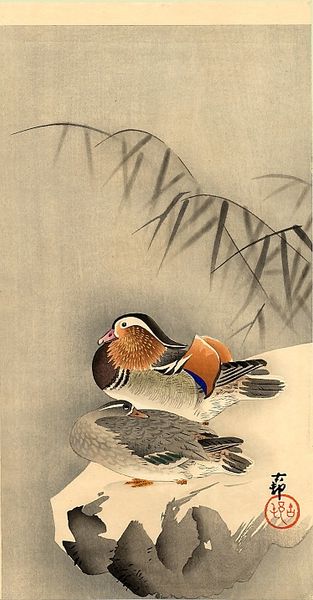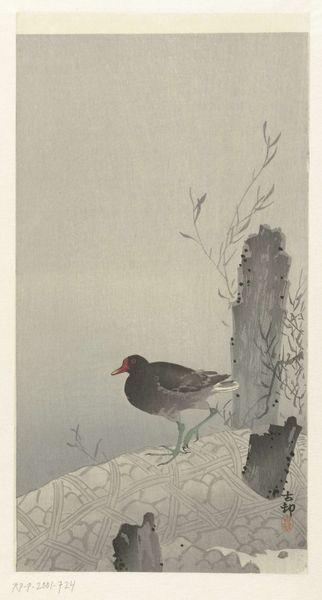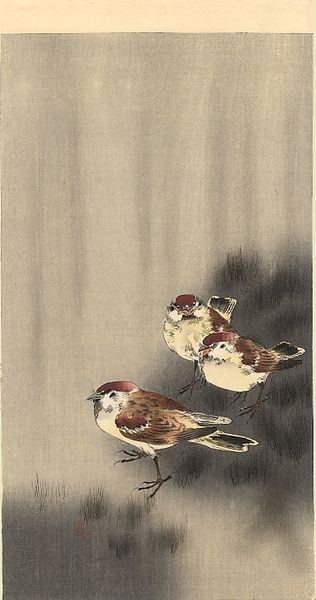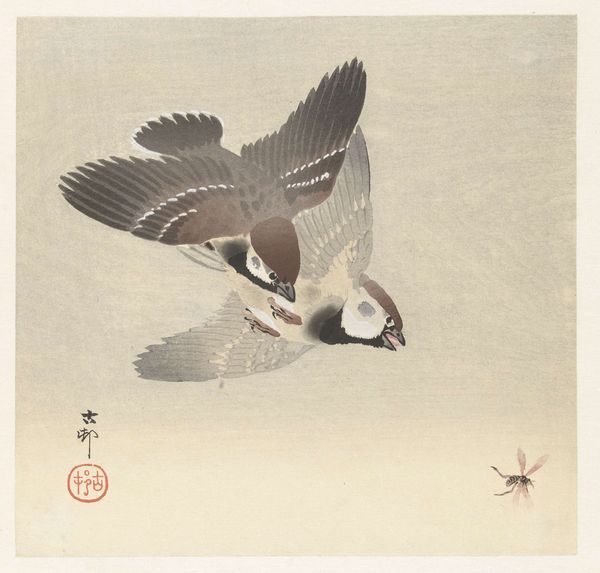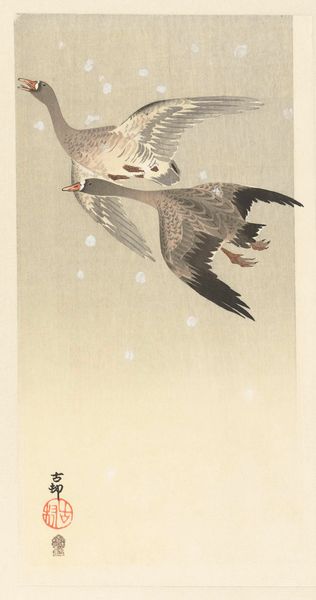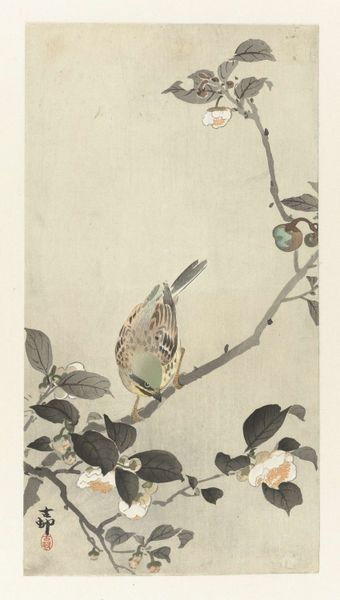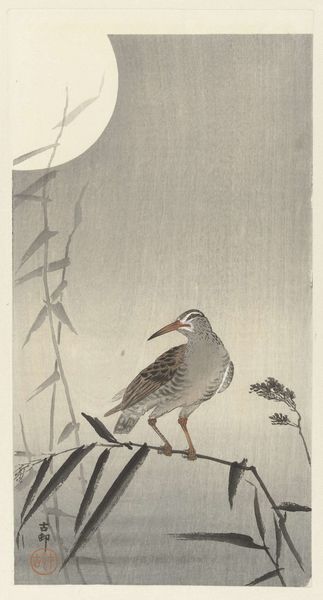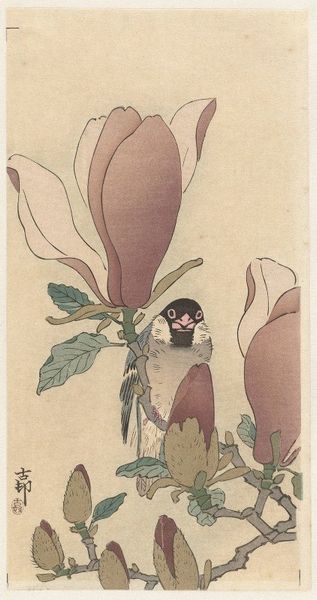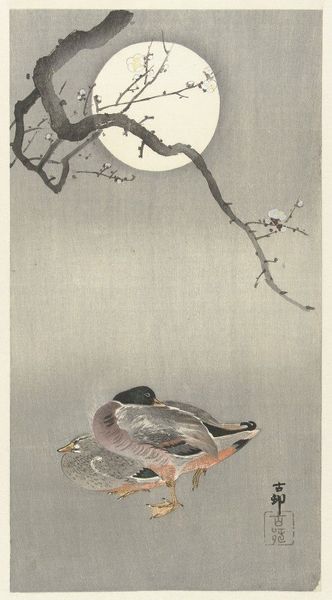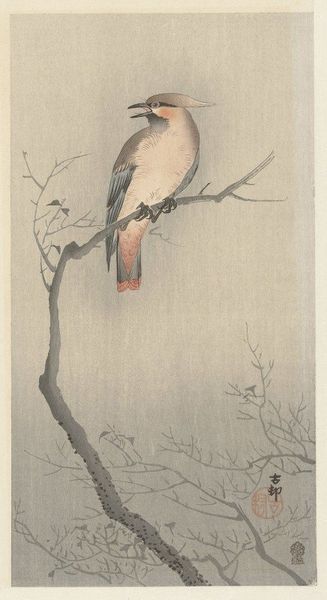
Dimensions: height 334 mm, width 183 mm
Copyright: Rijks Museum: Open Domain
Editor: This is "Two Tree Sparrows in the Rain," a woodblock print by Ohara Koson, likely created sometime between 1900 and 1930. The mood is so delicate, almost melancholy with those muted greys. What strikes you when you look at this piece? Curator: What immediately captures my attention is the intersection of nature and culture embedded within Ukiyo-e prints like this. Koson's choice to depict such common birds, elevated through artistic technique, reveals a fascinating dialogue between the natural world and the social context in which the art was created and consumed. Think about where these prints would be displayed. Editor: In homes? Curator: Exactly. How might owning an affordable image reflecting the seasons, natural beauty, or even idealized rural life impacted the buyer? Editor: It must have allowed people to connect with the natural world within their homes. Were birds a common motif? Curator: Yes, birds, flowers, and landscapes are prevalent, reflecting the public's values and desire for images reflecting peace and harmony with nature. The act of collecting these prints can be interpreted as a kind of participation in, and shaping of, a shared visual culture. Note that this particular image is now held at the Rijksmuseum. Editor: That's fascinating. It makes me consider how the museum's choices to acquire and display this artwork also plays a role in its ongoing meaning. Curator: Precisely. It emphasizes the dynamic relationship between art, society, and institutions over time. We influence the art even as it influences us. Editor: This has made me see how this simple print speaks volumes about Japanese society, both then and now. Curator: And the layers through which we approach it also contribute. Perhaps you'll carry this awareness in future curatorial choices!
Comments
No comments
Be the first to comment and join the conversation on the ultimate creative platform.
